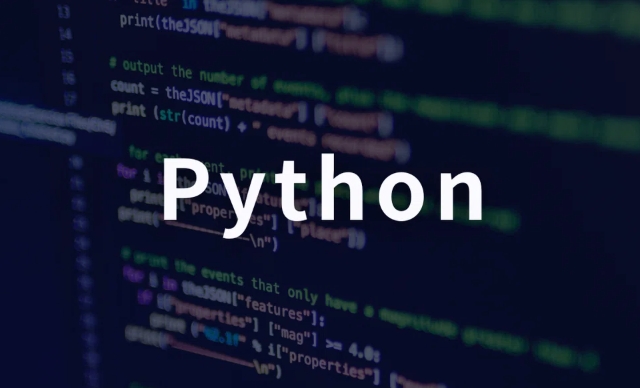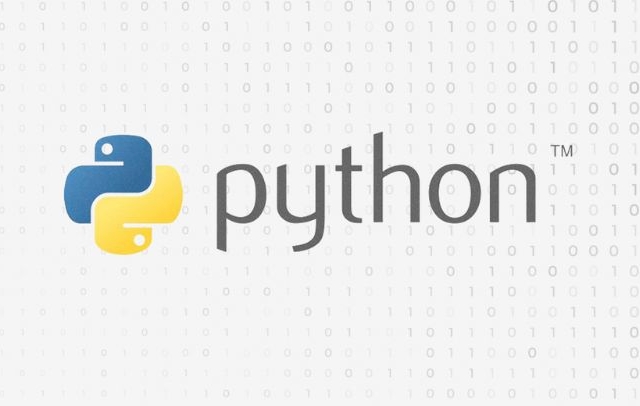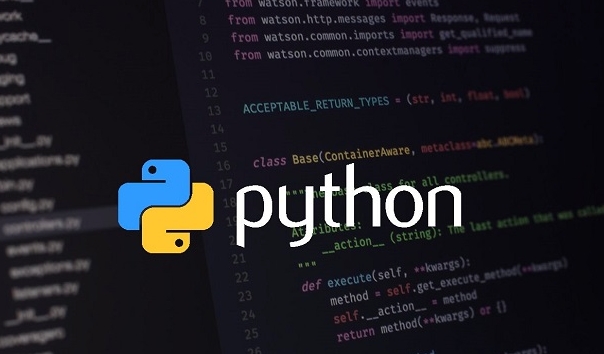Threads are suitable for I/O-intensive tasks, because shared memory does not require real parallel computing; 1. Threads simplify communication through shared memory, but cannot execute CPU tasks in parallel due to GIL restrictions; 2. Multiple processes bypass GIL to achieve true parallelism, suitable for CPU-intensive tasks but need additional processing of inter-process communication; 3. The selection basis is the task type: threads are used to wait for external resources, and multi-processes are used to calculate intensive; 4. Thread overhead is small but prone to cause race conditions, multi-processes are heavier and data serialization issues need to be considered.

Threading and multiprocessing both let Python handle multiple tasks, but they work differently under the hood and suit different types of tasks.

1. Threading in Python – Simultaneous-ish, not truly parallel
Threading gives the illusion of doing things at the same time, especially useful for I/O-bound tasks like downloading files or waiting for user input.

- Threads share the same memory space, so communication between them is straightforward.
- However, due to Python's Global Interpreter Lock (GIL), only one thread executes Python bytecode at a time — meaning threads don't run CPU-heavy tasks in parallel.
- Great for tasks where you're waiting on external resources (like network requests or disk reads).
Example use case:
You want to download 5 web pages at once. Threading can help speed this up because most of the time is spent waiting for responses from servers.
Common tools:
Use threading module or higher-level interfaces like concurrent.futures.ThreadPoolExecutor .

2. Multiprocessing – Real parallelism, separate processes
Multiprocessing spawns separate Python processes, each with its own interpreter and memory space. This bypasses the GIL and allow true parallel execution.
- Ideal for CPU-bound tasks like image processing, calculations, or data crunching.
- Because processes don't share memory by default, you need to use special tools (
multiprocessing.Queue,Manager, etc.) if you want them to communicate. - Heavier than threads — starting a new process takes more time and resources.
Example use case:
You're running a machine learning model that needs to process large datasets — multiprocessing lets you fully utilize all your CPU cores.
Common tools:
Use multiprocessing module or concurrent.futures.ProcessPoolExecutor .
3. When to choose which?
Here's a quick guide to help you pick:
-
Use threading when:
- Your program spends time waiting (network, disk, user input).
- You want simpler shared state between tasks.
- You're not pushing the CPU hard.
-
Use multiprocessing when:
- Your code is doing heavy computings.
- You want to take advantage of multiple CPU cores.
- Each task can run independently without much coordination.
A rule of thumb:
If it's about waiting, go threading. If it's about calculating, go multiprocessing.
4. Overhead and Gotchas
- Starting a new process is slower than creating a thread.
- Inter-process communication (IPC) is more complex and slower than sharing variables between threads.
- On Windows, multiprocessing requires functions and data to be picklable — which isn't always straightforward.
- Threaded programs can suffer from race conditions if multiple threads access and modify shared data simultaneously.
So depending on what your program does — waiting or computing — threading or multiprocessing will make more sense. Neither is universally better; it's about choosing the right tool for the job.
Basically that's it.
The above is the detailed content of Difference between Python threading and multiprocessing?. For more information, please follow other related articles on the PHP Chinese website!

Hot AI Tools

Undress AI Tool
Undress images for free

Undresser.AI Undress
AI-powered app for creating realistic nude photos

AI Clothes Remover
Online AI tool for removing clothes from photos.

Clothoff.io
AI clothes remover

Video Face Swap
Swap faces in any video effortlessly with our completely free AI face swap tool!

Hot Article

Hot Tools

Notepad++7.3.1
Easy-to-use and free code editor

SublimeText3 Chinese version
Chinese version, very easy to use

Zend Studio 13.0.1
Powerful PHP integrated development environment

Dreamweaver CS6
Visual web development tools

SublimeText3 Mac version
God-level code editing software (SublimeText3)
 How to handle API authentication in Python
Jul 13, 2025 am 02:22 AM
How to handle API authentication in Python
Jul 13, 2025 am 02:22 AM
The key to dealing with API authentication is to understand and use the authentication method correctly. 1. APIKey is the simplest authentication method, usually placed in the request header or URL parameters; 2. BasicAuth uses username and password for Base64 encoding transmission, which is suitable for internal systems; 3. OAuth2 needs to obtain the token first through client_id and client_secret, and then bring the BearerToken in the request header; 4. In order to deal with the token expiration, the token management class can be encapsulated and automatically refreshed the token; in short, selecting the appropriate method according to the document and safely storing the key information is the key.
 Explain Python assertions.
Jul 07, 2025 am 12:14 AM
Explain Python assertions.
Jul 07, 2025 am 12:14 AM
Assert is an assertion tool used in Python for debugging, and throws an AssertionError when the condition is not met. Its syntax is assert condition plus optional error information, which is suitable for internal logic verification such as parameter checking, status confirmation, etc., but cannot be used for security or user input checking, and should be used in conjunction with clear prompt information. It is only available for auxiliary debugging in the development stage rather than substituting exception handling.
 What are python iterators?
Jul 08, 2025 am 02:56 AM
What are python iterators?
Jul 08, 2025 am 02:56 AM
InPython,iteratorsareobjectsthatallowloopingthroughcollectionsbyimplementing__iter__()and__next__().1)Iteratorsworkviatheiteratorprotocol,using__iter__()toreturntheiteratorand__next__()toretrievethenextitemuntilStopIterationisraised.2)Aniterable(like
 What are Python type hints?
Jul 07, 2025 am 02:55 AM
What are Python type hints?
Jul 07, 2025 am 02:55 AM
TypehintsinPythonsolvetheproblemofambiguityandpotentialbugsindynamicallytypedcodebyallowingdeveloperstospecifyexpectedtypes.Theyenhancereadability,enableearlybugdetection,andimprovetoolingsupport.Typehintsareaddedusingacolon(:)forvariablesandparamete
 How to iterate over two lists at once Python
Jul 09, 2025 am 01:13 AM
How to iterate over two lists at once Python
Jul 09, 2025 am 01:13 AM
A common method to traverse two lists simultaneously in Python is to use the zip() function, which will pair multiple lists in order and be the shortest; if the list length is inconsistent, you can use itertools.zip_longest() to be the longest and fill in the missing values; combined with enumerate(), you can get the index at the same time. 1.zip() is concise and practical, suitable for paired data iteration; 2.zip_longest() can fill in the default value when dealing with inconsistent lengths; 3.enumerate(zip()) can obtain indexes during traversal, meeting the needs of a variety of complex scenarios.
 Python FastAPI tutorial
Jul 12, 2025 am 02:42 AM
Python FastAPI tutorial
Jul 12, 2025 am 02:42 AM
To create modern and efficient APIs using Python, FastAPI is recommended; it is based on standard Python type prompts and can automatically generate documents, with excellent performance. After installing FastAPI and ASGI server uvicorn, you can write interface code. By defining routes, writing processing functions, and returning data, APIs can be quickly built. FastAPI supports a variety of HTTP methods and provides automatically generated SwaggerUI and ReDoc documentation systems. URL parameters can be captured through path definition, while query parameters can be implemented by setting default values ??for function parameters. The rational use of Pydantic models can help improve development efficiency and accuracy.
 How to test an API with Python
Jul 12, 2025 am 02:47 AM
How to test an API with Python
Jul 12, 2025 am 02:47 AM
To test the API, you need to use Python's Requests library. The steps are to install the library, send requests, verify responses, set timeouts and retry. First, install the library through pipinstallrequests; then use requests.get() or requests.post() and other methods to send GET or POST requests; then check response.status_code and response.json() to ensure that the return result is in compliance with expectations; finally, add timeout parameters to set the timeout time, and combine the retrying library to achieve automatic retry to enhance stability.
 Setting Up and Using Python Virtual Environments
Jul 06, 2025 am 02:56 AM
Setting Up and Using Python Virtual Environments
Jul 06, 2025 am 02:56 AM
A virtual environment can isolate the dependencies of different projects. Created using Python's own venv module, the command is python-mvenvenv; activation method: Windows uses env\Scripts\activate, macOS/Linux uses sourceenv/bin/activate; installation package uses pipinstall, use pipfreeze>requirements.txt to generate requirements files, and use pipinstall-rrequirements.txt to restore the environment; precautions include not submitting to Git, reactivate each time the new terminal is opened, and automatic identification and switching can be used by IDE.






